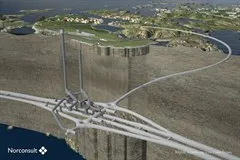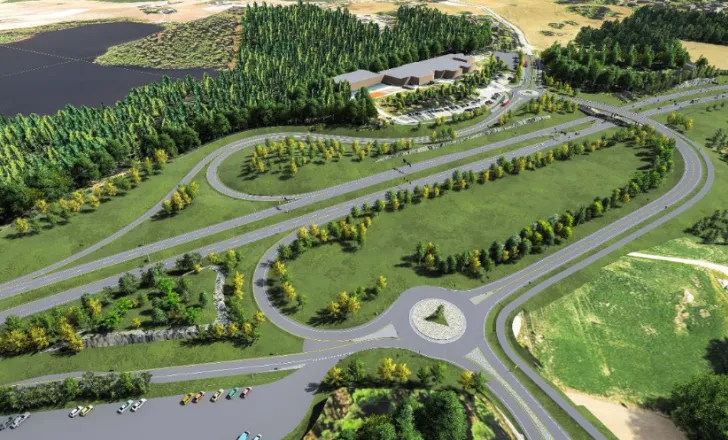Norway is considering proposals for another route across over the vast Hardangervidda, one of Europe’s largest plateaux and most of which is a national park.
The Norwegian Road Administration (Statens Vegvesen) said one proposal would incorporate a 6km tunnel at a cost more than €216 million, according to a report the Nationen newspaper.
November 2, 2015
Read time: 1 min
Norway is considering proposals for another route across over the vast Hardangervidda, one of Europe’s largest plateaux and most of which is a national park.
The Norwegian Road Administration (1208 Statens Vegvesen) said one proposal would incorporate a 6km tunnel at a cost more than €216 million, according to a report the Nationen newspaper.
One of Norway’s most scenic tourist routes runs across the plateau, the the east-west Riksvei 7 – National Route 7 that includes a new suspension bridge, Hardangerbrua. The total N7, around 388km long, is one of several preferred routes between Norway’s largest two cities, the capital Oslo and Bergen, to the west over mountainous terrain.
The 69km tourist section of the N7 follows the Eidfjorden before crossing the fjord on the Hardanger Bridge which opened in 2013 after four years of construction and replaced a ferry service. The Hardangerbrua is 1.38km long and its single span is 1.31km. %$Linker:2 Internal <?xml version="1.0" encoding="utf-16"?><dictionary /> 2 2429 0 oLinkInternal World highways reported Norway's bridge meets tough environmental targets false /sections/key-projects/features/norways-bridge-meets-tough-environmental-targets/ true false %> on the bridge’s construction in December 2011.
The N7 road continues through the Vallavik Tunnel before reaching its terminus at the village of Granvin. The tourist section has seen heavier use after a severe fire in July closed the Skatestraum tunnel on the E16, a preferred route for commercial traffic.
Repairs to the 2km Skatestraum tunnel will run into next year, the Norwegian media outlet E24 said in August. The tunnel was opened only in 2002.
No one was injured when a tanker truck carrying 16,000 litres of gasoline crashed and its leaking fuel caught ignited.
The Norwegian Road Administration (
One of Norway’s most scenic tourist routes runs across the plateau, the the east-west Riksvei 7 – National Route 7 that includes a new suspension bridge, Hardangerbrua. The total N7, around 388km long, is one of several preferred routes between Norway’s largest two cities, the capital Oslo and Bergen, to the west over mountainous terrain.
The 69km tourist section of the N7 follows the Eidfjorden before crossing the fjord on the Hardanger Bridge which opened in 2013 after four years of construction and replaced a ferry service. The Hardangerbrua is 1.38km long and its single span is 1.31km. %$Linker:
The N7 road continues through the Vallavik Tunnel before reaching its terminus at the village of Granvin. The tourist section has seen heavier use after a severe fire in July closed the Skatestraum tunnel on the E16, a preferred route for commercial traffic.
Repairs to the 2km Skatestraum tunnel will run into next year, the Norwegian media outlet E24 said in August. The tunnel was opened only in 2002.
No one was injured when a tanker truck carrying 16,000 litres of gasoline crashed and its leaking fuel caught ignited.







